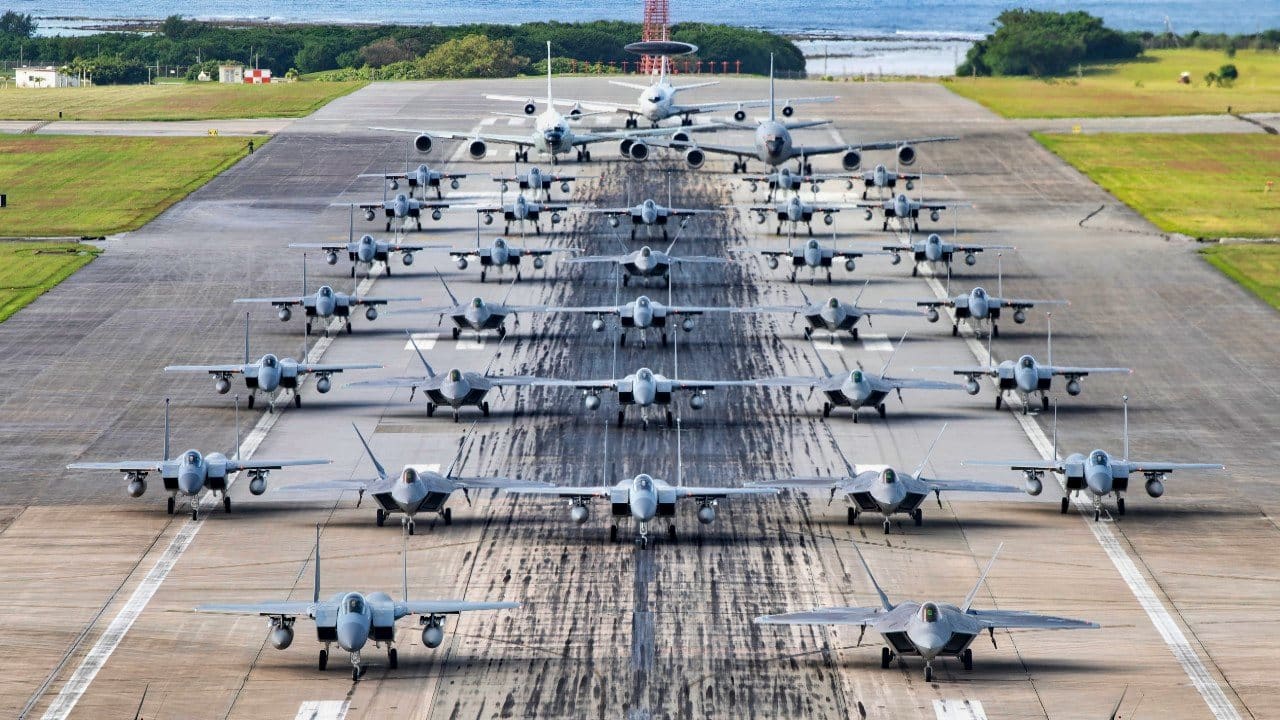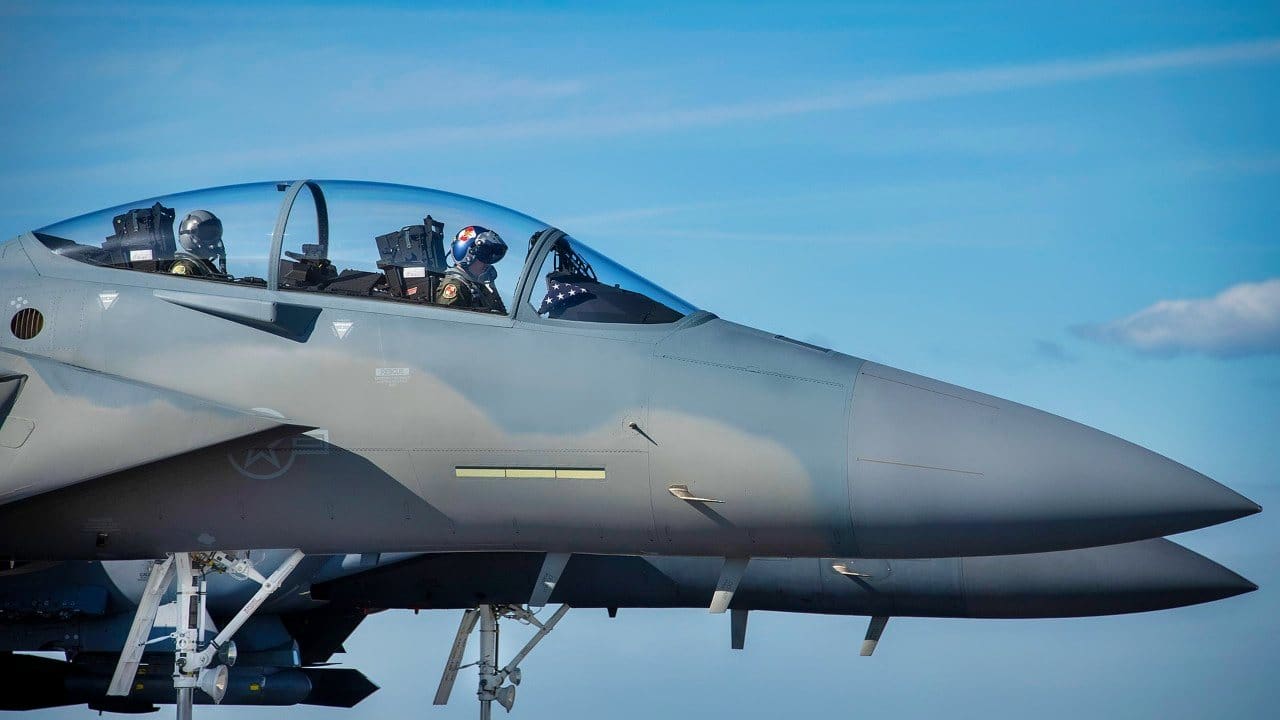We support our Publishers and Content Creators. You can view this story on their website by CLICKING HERE.
One of the critical elements of modern warfare, reinforced by the war in Ukraine, is the importance of air superiority and the need to have highly capable, combat-proven aircraft. It is imperative that the United States maintains a robust and superior fleet to meet threats ranging from terrorism to peer-level war. The F-15EX Eagle II (also known in popular media as the F-15EX), a completely redesigned aircraft, provides US forces superiority in critical combat missions now and into the future.
What Makes the F-15EX Eagle II Special
The F15EX is a multi-role aircraft that goes faster and further and carries more payload than any other fighter aircraft in the US inventory. The F-15EX is a highly maneuverable, survivable, and an unbeaten, combat-proven aircraft, and continues to be “the go to aircraft” for US combatant commanders.
In testimony before the U.S. Senate Armed Services Committee’s Subcommittee on Airland, Lieutenant General David S. Nahom expressed the importance of “investing in the capabilities that are needed for an ever-increasing peer threat” as he discussed the need for congressional investment in the F-15EX. Notably, Nahom explained the urgent need for fresh aircraft in the U.S. fighter fleet, highlighting that “we have an aging fighter force that is in excess of 29 years fleet average.” That means our nation’s Air Force crews are piloting the oldest fleet of fighter aircraft of all relevant contemporary nations. The Air Force isn’t asking for just any aircraft to meet this growing need — it wants the new F-15EX fighter so it can “offer what the combatant commanders need today.”
The F-15EX Eagle II is the result of many years of learned and applied knowledge, technology advancement, and forward-thinking capabilities. I had the opportunity and privilege to manage the F-15 program’s Advanced Design/International and New Business Development Teams for more than 10 years. We had close partnerships with the Air Force’s combat operational users and acquisition personnel, as well as industry partners and suppliers, to continually meet the U.S. Air Force’s (USAF) combat needs. Our team contributed to the efforts ensuring the F-15EX is the most capable multi-role fighter in the world.
The F-15’s original design and subsystems are largely why the platform has had a long, successful career. The size, structural strength, flight control system, Environmental Support System (ECS), electrical power, aircrew interfaces, weapon interfaces, communication systems, and avionic/sensor integration subsystem have continued to enable the efficient incorporation of leading-edge technologies.
The Advanced Design Team along with industry partners, utilized the F-15E1 Demo Aircraft to conduct demo flights and research for early development, and cost and integration risk reduction, of new technologies. The Team supported the development and flight demo of the first-generation Advanced Display Core Processor, and the early design concepts for future front and rear seat glass cockpits; early SATCOM and Hypersonic Weapon integration concepts. Another example was the early aircraft designs and interfaces (bomb rack, avionics, and aircrew interfaces) for the initial smart Small Diameter Bomb (SDB) capability. The future potential of the smart bomb was further investigated by performing an off-board targeting demo of an SDB – resulting in a direct hit.

F-15 and F-35 Elephant Walk in 2022.
One of the significant benefits of the “E1” efforts was the encouragement of investments by the USAF, our international allies, and the industry team. The investments contributed to maintaining the F-15 as the most reliable, lethal, and force-integrated fighter aircraft in the world.
At a delivery ceremony in December 2023, held at Elgin Air Force Base in Florida, Lieutenant Colonel Christopher Wee, Operational Flight Program Combined Test Force Commander stated that “the F-15EX is the most capable Eagle on the planet” and that “it has met every challenge…thrown at it to date,” including testing the aircraft’s newest features — a cockpit pressure monitor and warning system and an ultra-high frequency antenna for satellite communications. Such testing “ensures the U.S. Air Force continues to provide deterrence and readiness for the high-end fight,” noted Brigadier General Jeffrey Geraghty, 96th Test Wing Commander.

Lt. Col. Richard Turner, 40th Flight Test Squadron commander, pilots the F-15EX, the Air Force’s newest fighter aircraft, to its new home at Eglin Air Force Base, Florida March 11. The aircraft will be the first Air Force aircraft to be tested and fielded from beginning to end through combined developmental and operational tests. The 40th FLTS and the 85th Test and Evaluation Squadron personnel are responsible for testing the aircraft. (U.S. Air Force photo/Samuel King Jr.)
Congressional debates over funding priorities for the 2025 National Defense Authorization Act are underway. Our leaders must recognize the importance of refreshing the Air Force’s fighter fleet. The F-15EX Eagle II must be included to maintain superiority across all air missions.
About the Author: Bob Lutter
Bob Lutter is a 21-year veteran of the USAF with combat service in Vietnam, and tours as a T-38 Instructor Pilot and F-4G (Wild Wessel) Pilot. Bob worked for McDonnell Douglas for 25 years – with a primary focus on Advanced Technologies and Modernization for the multi-role F-15.
All images are Creative Commons sourced.

 Conservative
Conservative  Search
Search Trending
Trending Current News
Current News 




